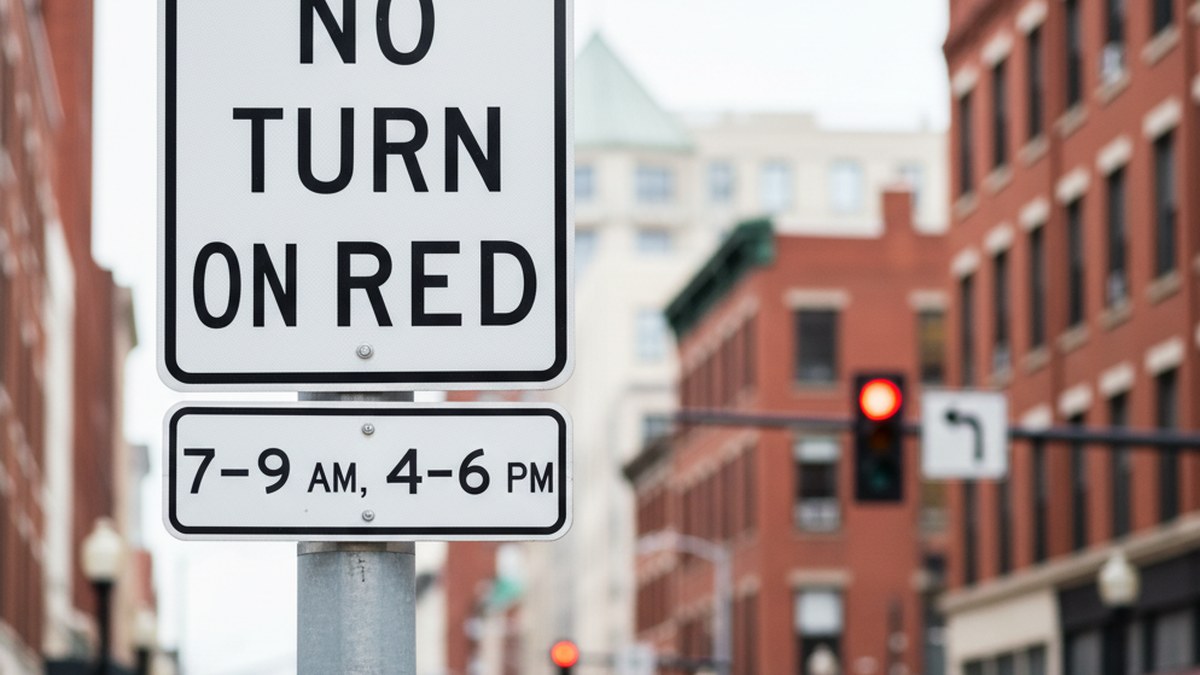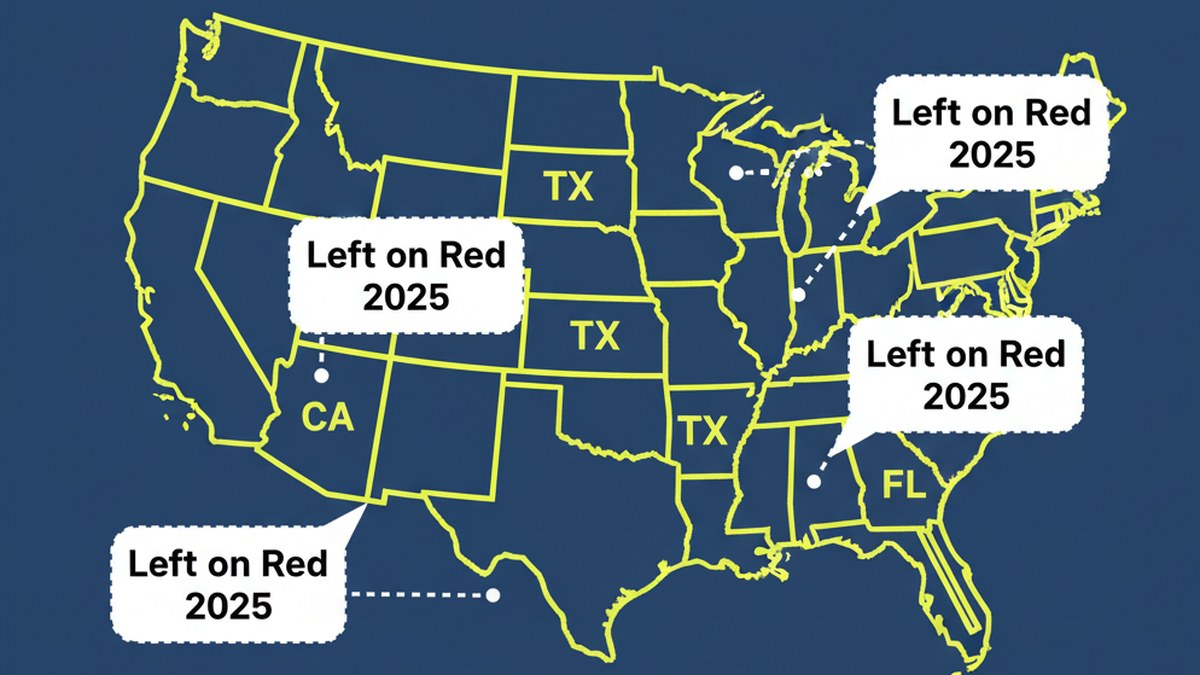States list and city-level restrictions (2025 map & notes)
In 2025, the baseline U.S. rule for left on red remains consistent: it is typically allowed only when you are turning from a one-way street onto another one-way street, you stop completely, and no sign prohibits the movement. However, city engineers frequently restrict it in dense downtown grids to protect people in the crosswalk and to reduce conflicts with protected left phases. That is why you will often see NO TURN ON RED or time-based plaques at busy corners.
A practical way to think about state vs. city rules is a two-layer system: many states permit the movement in principle, but cities decide where it is safe in practice. Expect broader permissions in suburban one-way pairs and tighter restrictions in CBDs, near schools, and at locations with LPI (Leading Pedestrian Interval).
Conditions you must meet before turning
Regardless of state, you must treat a left on red like a right on red when it comes to right-of-way: stop fully at the line, yield to pedestrians and cyclists in the crosswalk, and yield to any traffic with a green indication. Take your time to check for people entering late, and do not creep into the crosswalk.
Signs, pedestrians, and LPI (Leading Pedestrian Interval) conflicts
If you see NO TURN ON RED—full time or at specified hours—obey the sign: it overrides the general permission. With an LPI, pedestrians get a head start, so even if there is no sign, you must leave the crosswalk clear until it is safe and legal. Some agencies add NO TURN ON RED WHEN PEDESTRIANS PRESENT; others use time plaques such as 7–9 AM, 4–6 PM.
Example junctions and step-by-step safety checklist
- Downtown one-way to one-way with stores and frequent walkers: expect a posted restriction or LPI.
- Suburban arterial one-way pair with long sight lines: commonly allowed if no sign prohibits.
- School zones: look for time plaques; restrictions often apply only during arrival/dismissal windows.
- Stop before the stop line or crosswalk; wheels straight.
- Look left-front-right for walkers and cyclists; check the far crosswalk, too.
- Scan for NO TURN ON RED and for arrows that may control your lane.
- Proceed only when clear—smooth, single decisive turn without blocking the crosswalk.
Source links and how to quickly verify your city's rule
Search your state driver manual for "left on red" and your city DOT or traffic engineering page for "NO TURN ON RED policy." If your city operates LPIs broadly, it likely posts more restrictions in the core.
Special cases: arrows, one-way pairs, and flashing signals
A red left arrow generally means the red applies specifically to the left-turn movement. In most states you may not turn left on red when facing a red arrow unless a sign explicitly allows it. If the signal is flashing red, treat it as a stop sign; but remember that many city policies still prohibit turns on red at designated locations.
When cities post a blanket ban on left on red

Several large cities either ban turns on red downtown or are piloting corridors where they are off-limits. The typical goal is to reduce conflicts, improve vision zero metrics, and keep crosswalks clear. These are local rules: even if your state allows the maneuver, the sign wins at that intersection.
Downtown grids, school-hour plaques, and bus-only phases
Urban grids concentrate pedestrian volumes on every leg of the intersection, so engineers rely on NO TURN ON RED to simplify movements. Near schools you may see time plaques aligned with bell schedules. Some transit corridors use bus-only phases or transit-signal priority; a posted restriction keeps turns from blocking the bus lane.
Camera enforcement and common ticket mistakes
Automated cameras are usually configured for straight-through red-light running and right on red violations, but some locations issue citations for left on red when a sign is present. Common mistakes include rolling the stop, stopping past the line into the crosswalk, or missing a time-based plaque. If you believe the sign was obscured, photos or video of the approach often help during an appeal.
Appeal notes: photos, sight-line diagrams, and signage
For contested tickets, gather clear photos of the approach, the sign location, and the signal head. A simple diagram showing the stop line, crosswalk, and where the sign sits relative to your lane can be persuasive.
When a left on red is outright banned in your state
A few jurisdictions either prohibit left on red statewide or restrict it so heavily that you will rarely encounter a legal opportunity. Treat any uncertainty as a no-go and continue to the next green. Remember that a legal left on red must begin in the leftmost lane of a one-way street and end in the leftmost lane of the receiving one-way; if either street is two-way, the maneuver is not the standard left-on-red case.
Want the single-movement rule? See Left on Red (one-way to one-way) and compare with Right Turn on Red rules.
